Winter Weather Appliance Prep: Protecting Your Home’s Most Essential Equipment from Cold Damage
Worried about your appliances surviving another brutal Canadian winter? You’re not alone – cold weather can wreak havoc on everything from your fridge to your dishwasher, but with the right prep work, you can keep them running smoothly all season long.Winter in Abbotsford brings its own set of challenges, and your home’s appliances are on the front lines. Think of your appliances as the hardest working members of your household crew – they’re pulling overtime during the holiday season while also battling dropping temperatures, increased moisture, and power fluctuations. Just like you wouldn’t send someone out into a snowstorm without proper gear, your appliances need winter prep to handle what Mother Nature throws their way. The good news is that a little preventative care now can save you from expensive repairs and the headache of broken appliances when you need them most. Getting your appliances winter-ready isn’t just about avoiding breakdowns – it’s about protecting your investment and ensuring your home stays comfortable and functional throughout the cold months. When temperatures drop and holiday cooking ramps up, your appliances face unique stresses that can lead to everything from burst pipes to complete system failures. Taking time now to winterize your equipment means fewer emergency repair calls and more peace of mind.The stakes are higher during winter because appliance failures don’t just mean inconvenience – they can lead to serious problems like flooding from burst washing machine hoses or food spoilage from refrigerator breakdowns. Plus, repair technicians are busier during winter months, which means longer wait times and potentially higher costs. By preparing your appliances for winter weather, you’re essentially buying insurance against these costly disruptions.
Key Outtakes:
- Winter appliance maintenance prevents costly breakdowns and extends equipment lifespan during the most demanding season
- Proper preparation includes cleaning, inspecting seals and hoses, and ensuring adequate ventilation around major appliances
- Special attention to water-connected appliances prevents freeze damage that can cause flooding and expensive repairs
- Holiday cooking season puts extra strain on kitchen appliances, making pre-winter maintenance even more critical
- Professional inspections can catch potential problems before they become emergency situations
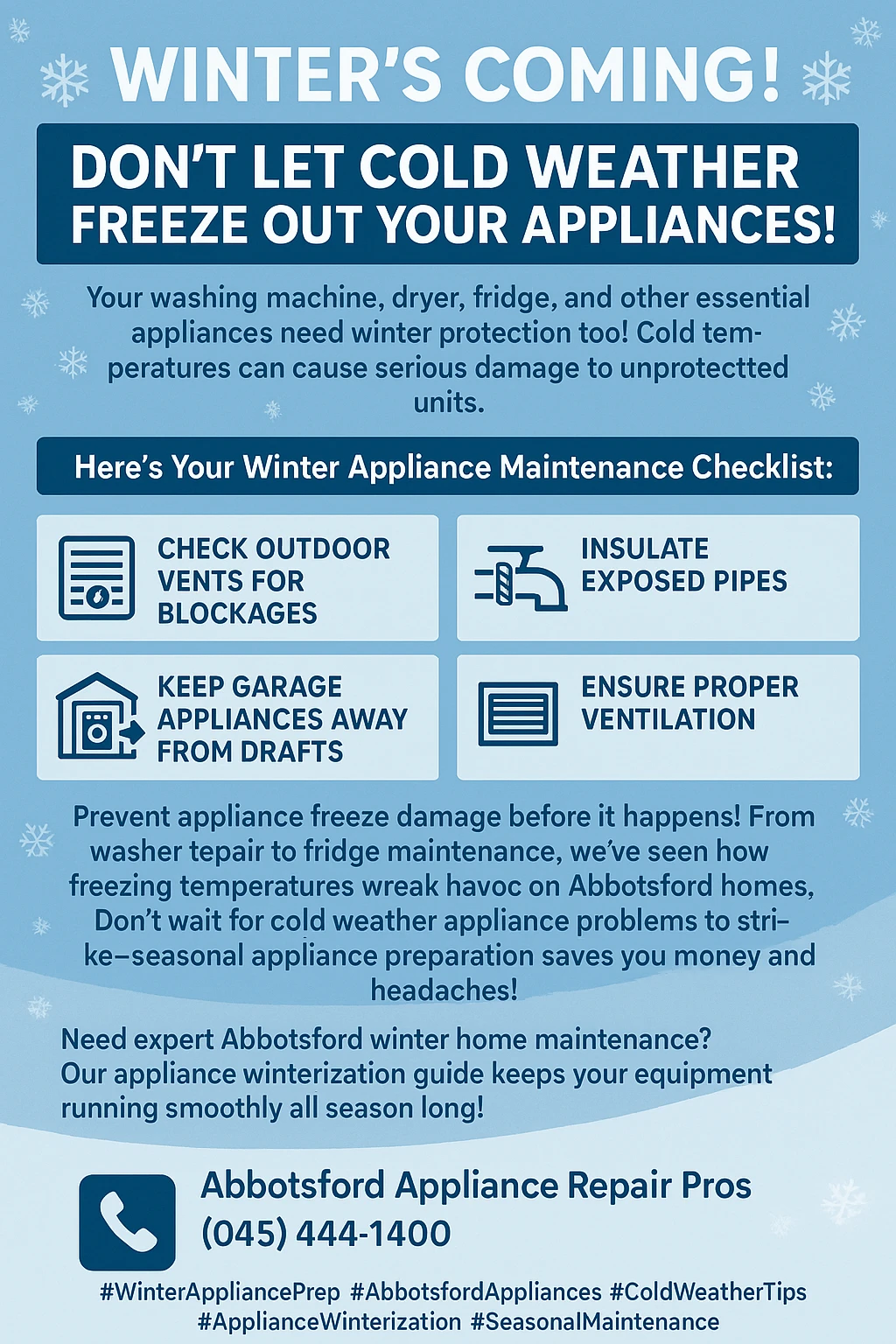
Understanding Winter’s Impact on Your Home Appliances
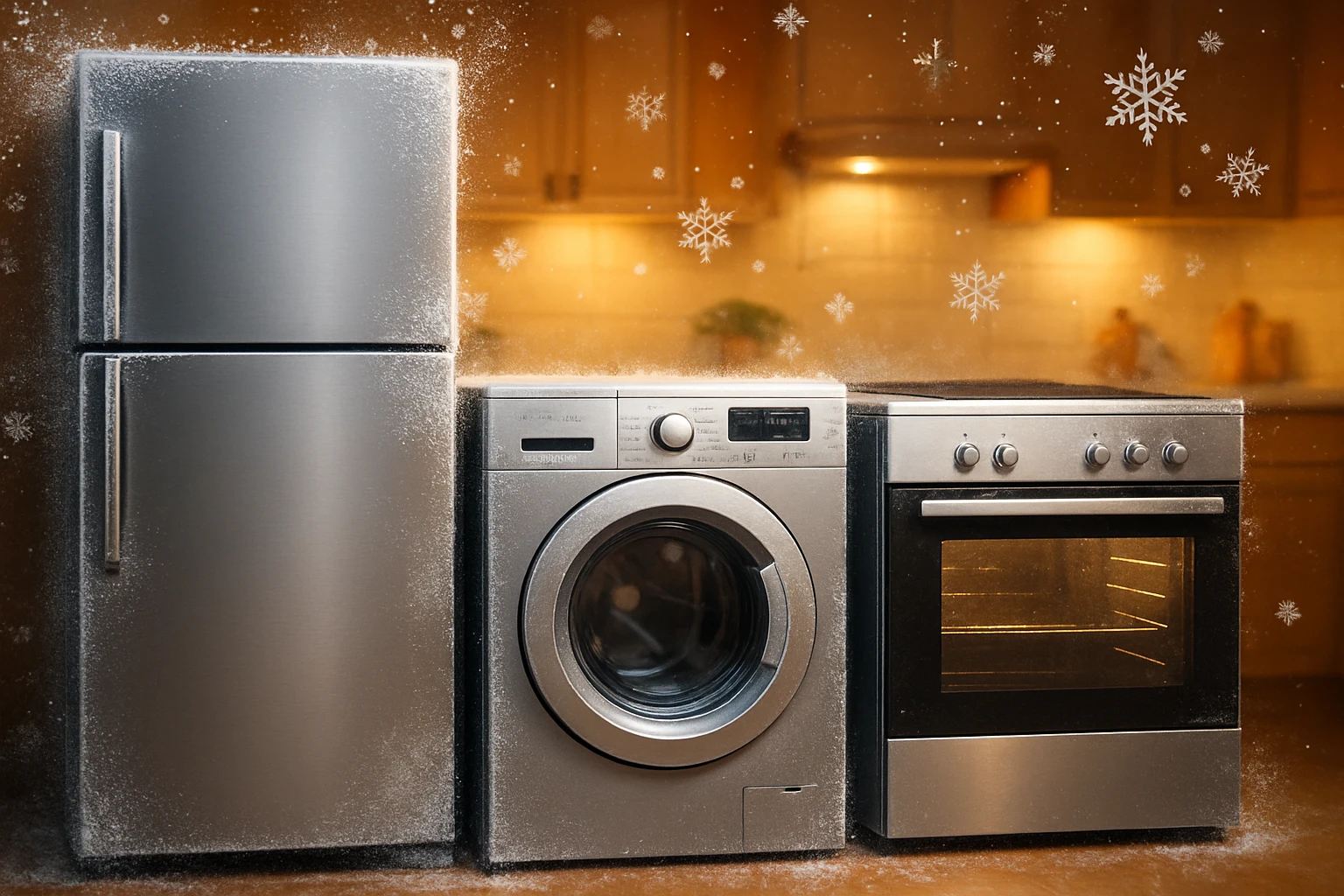
Winter weather creates a perfect storm of conditions that can stress your appliances beyond their normal operating parameters. Cold temperatures affect everything from the viscosity of lubricants in motors to the flexibility of rubber seals and gaskets. When your home’s heating system kicks into overdrive, it creates temperature fluctuations that cause materials to expand and contract, potentially loosening connections and wearing out components faster than usual.The increased humidity from cooking holiday meals, combined with temperature swings, creates condensation that can damage electrical components and promote rust in areas you might never think to check. Your appliances are also working harder during winter months – your dryer battles cold, damp air while your oven sees marathon cooking sessions that would make a restaurant chef proud. This increased workload, combined with environmental stresses, means components that might last years under normal conditions could fail in months without proper preparation.Power fluctuations are another winter hazard that many homeowners don’t consider. Ice storms, heavy snow, and high winds can cause electrical surges and brownouts that damage sensitive electronic controls in modern appliances. These power issues can fry circuit boards, damage compressors, and cause erratic behavior that’s expensive to diagnose and repair. Understanding these risks helps you see why winter prep isn’t optional – it’s essential maintenance that protects your investment and keeps your home running smoothly.
Refrigerator and Freezer Winter Protection
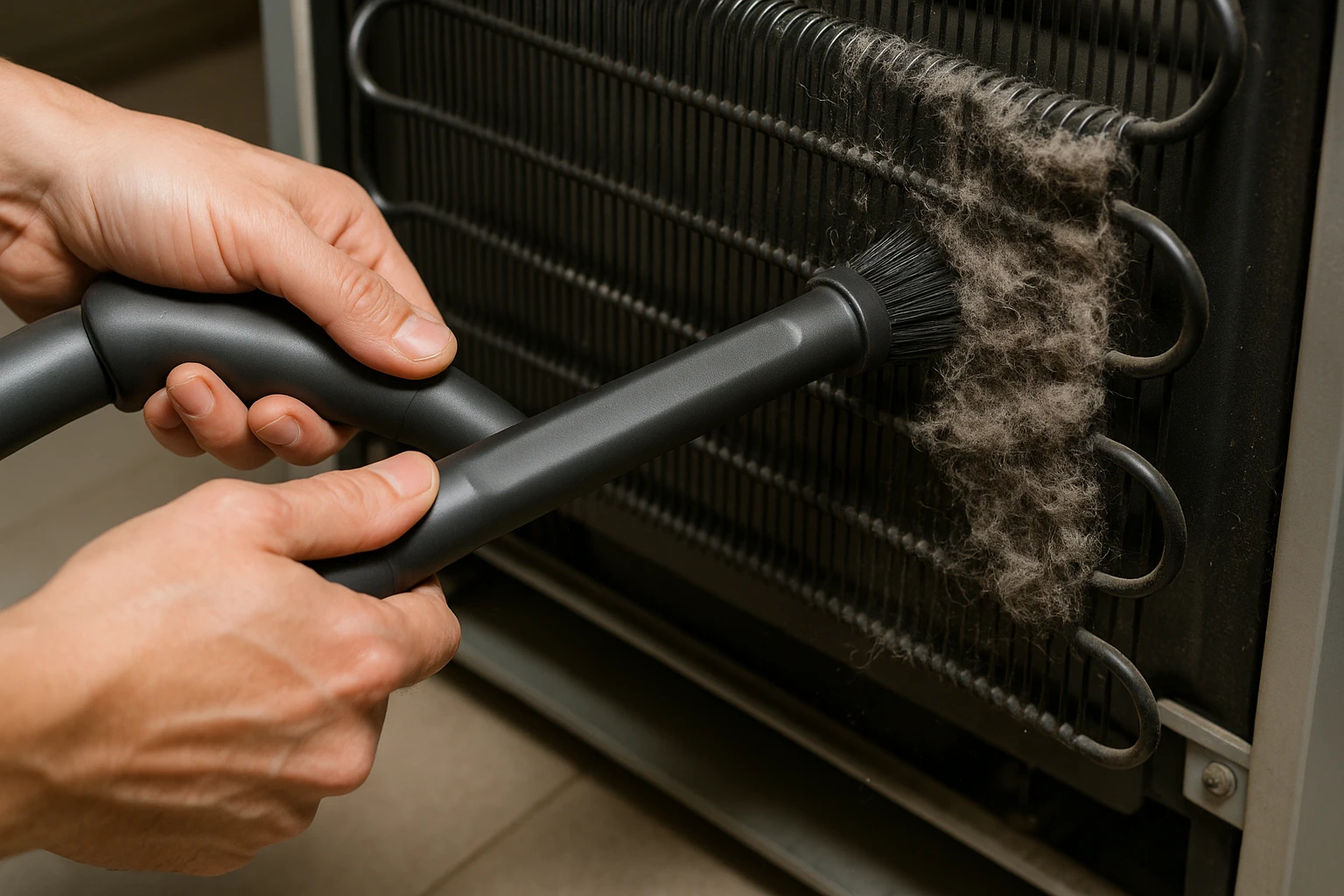
Your refrigerator and freezer work overtime during winter, dealing with everything from holiday meal prep to temperature fluctuations as people open doors more frequently during gatherings. The transition into winter prep for these crucial appliances starts with recognizing that they’re already working harder than usual, and small problems can quickly become big headaches when you’re trying to store holiday groceries. A refrigerator that’s struggling with efficiency issues might seem fine during normal use but could fail completely when faced with the demands of holiday entertaining.Start your refrigerator winter prep by checking and cleaning the door seals thoroughly. Cold weather makes rubber seals more brittle and prone to cracking, which allows warm air to infiltrate and forces your compressor to work harder. Test each seal by closing the door on a piece of paper – if you can pull it out easily, that seal needs attention or replacement. Pay special attention to the corners and areas where seals meet, as these are common failure points that worsen with temperature changes.The condenser coils on your refrigerator deserve extra attention before winter sets in. These coils, typically located on the back or bottom of your unit, work harder in cold weather and can ice up if they’re dirty or blocked. Vacuum them thoroughly using a coil brush if you have one, or carefully use a soft brush to remove dust and debris. This simple maintenance task can improve efficiency and prevent costly repairs down the line. Check your refrigerator’s internal temperature settings and consider adjusting them slightly for winter conditions. The ideal refrigerator temperature is between 37 and 40 degrees Fahrenheit, but you might need to fine-tune this based on how often doors are opened and the temperature of your kitchen. A refrigerator thermometer is a worthwhile investment that helps you monitor performance and catch problems early.Don’t forget about your freezer’s defrost system, which works harder during winter when humidity levels fluctuate. If you have a manual defrost unit, plan for more frequent defrosting sessions during winter months. For automatic defrost models, check that the defrost drain is clear and flowing properly – a blocked drain can cause ice buildup that damages components and reduces efficiency. Clean the drain with warm water and a small amount of baking soda to prevent bacterial growth and ensure proper drainage.Consider the placement and ventilation around your refrigerator, especially if it’s in a garage or basement where temperatures fluctuate more dramatically. These units need adequate air circulation to operate efficiently, and cold weather can affect their performance. Ensure there’s at least an inch of clearance on all sides and several inches above the unit for proper airflow.
Kitchen Appliance Winterization Strategy
The transition from fall to winter marks the beginning of what appliance repair professionals call “the busy season” – and your kitchen appliances are about to face their biggest test of the year. Holiday cooking, family gatherings, and the general increase in home food preparation means your oven, stove, dishwasher, and small appliances will be working harder than they have all year. This increased demand, combined with the environmental stresses of winter weather, creates the perfect conditions for breakdowns and failures.Your oven and stove need special attention before the holiday cooking marathon begins. Start with a thorough cleaning, paying particular attention to burners, heating elements, and the oven interior. Built-up grease and food debris don’t just affect performance – they create fire hazards that become more dangerous with extended cooking sessions. If your oven has a self-cleaning function, now is the perfect time to use it, but make sure to wipe down any residue afterward and check that all components are working properly.Test your oven’s temperature accuracy with an oven thermometer, as heating elements can drift over time and cold weather can affect calibration. An oven that’s running 25 degrees too cool might not seem like a big deal until you’re trying to cook a holiday turkey and everything takes twice as long as expected. If you discover temperature irregularities, it’s better to address them now rather than during your busiest cooking season.For gas appliances, winter preparation includes checking connections and ensuring proper ventilation. Cold weather can cause gas lines to contract slightly, potentially creating small leaks that become bigger problems over time. If you smell gas or hear hissing sounds, turn off the gas supply immediately and call a professional. Don’t attempt to diagnose or repair gas appliances yourself – this is definitely professional territory.Your dishwasher faces unique winter challenges, particularly if it’s connected to the same water lines that serve outdoor faucets or if it’s located near exterior walls where pipes might be more susceptible to freezing. Run a cleaning cycle with dishwasher cleaner or white vinegar to remove mineral buildup and soap scum that can interfere with proper operation. Check the door seals for cracks or wear, and inspect the spray arms for clogs that could reduce cleaning effectiveness.The garbage disposal, while not technically a major appliance, plays a crucial role during heavy cooking seasons and needs winter attention too. Grind ice cubes to clean the blades and freshen the scent with citrus peels. Avoid putting grease down the disposal during winter months, as it can solidify more quickly in cold pipes and create stubborn clogs that are expensive to clear.
Laundry Room Cold Weather Preparation
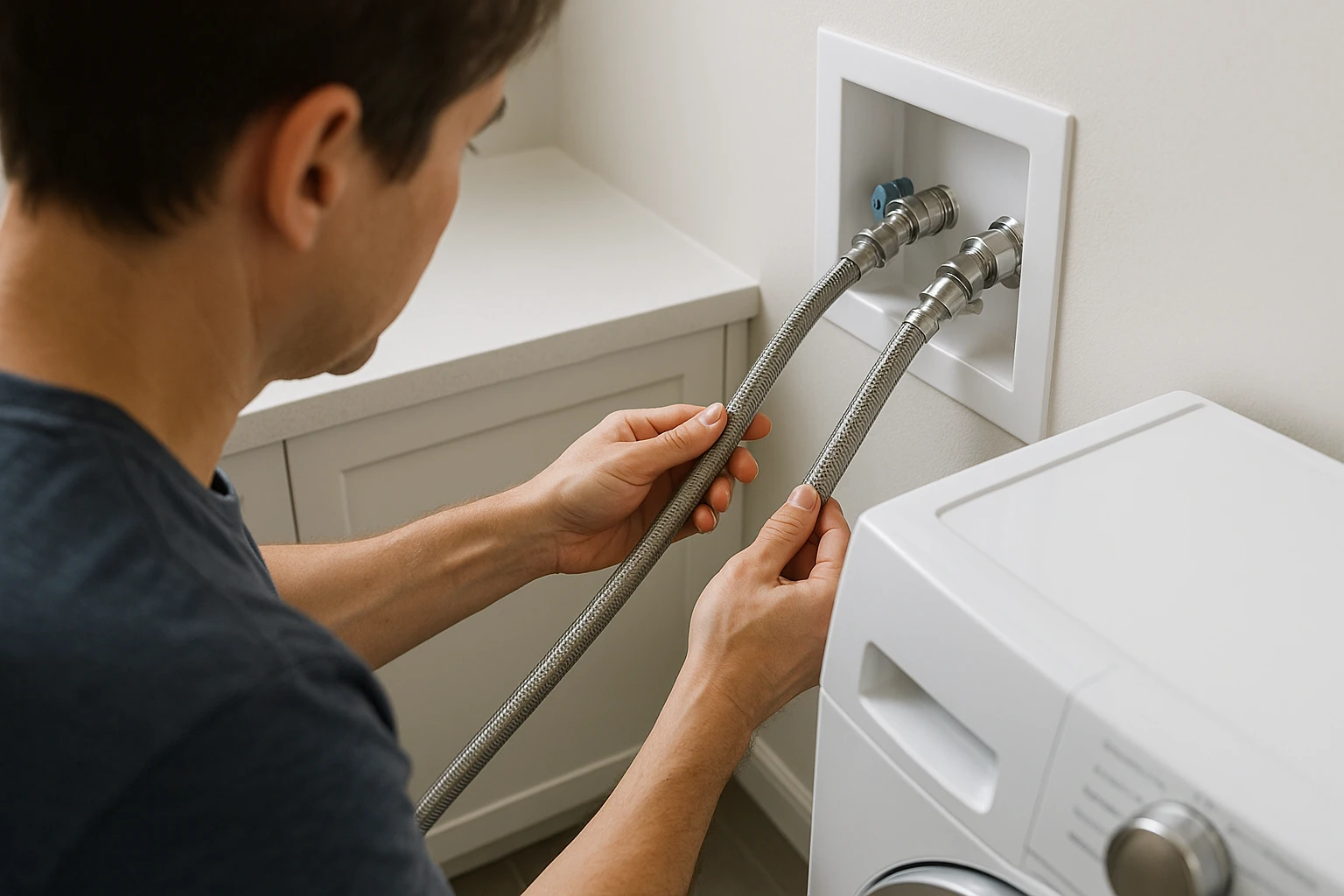
Moving from kitchen prep to laundry room maintenance, it’s important to recognize that your washer and dryer face some of the most challenging winter conditions in your home. These hardworking appliances deal with increased loads from heavier winter clothing, blankets, and holiday linens, while also potentially facing temperature fluctuations if your laundry room isn’t well-heated. The combination of increased demand and environmental stress makes thorough winter preparation essential for avoiding mid-season breakdowns.Your washing machine’s water supply lines are particularly vulnerable during winter months, especially if they run through unheated areas or along exterior walls. Inspect both hot and cold water hoses for signs of wear, bulging, or cracking – problems that worsen with temperature changes and can lead to catastrophic failures. Replace any questionable hoses now, and consider upgrading to braided steel hoses that offer better protection against burst failures. The small investment in quality hoses can save you from dealing with a flooded laundry room in the middle of winter. Check your washer’s internal systems by running an empty hot water cycle with two cups of white vinegar or a commercial washing machine cleaner. This removes soap buildup, mineral deposits, and bacteria that can cause odors and reduce cleaning effectiveness. Pay attention to how the machine fills, agitates, and drains – any unusual noises or behaviors should be investigated now rather than ignored until they become bigger problems.Your dryer needs special attention to prevent fire hazards that become more serious during winter months when the house is sealed up tight. Clean the lint trap thoroughly, but don’t stop there – remove the entire lint trap assembly if possible and vacuum out the cavity underneath. Lint buildup reduces efficiency and creates fire hazards that are particularly dangerous when the dryer is working harder to dry heavy winter items.The dryer vent system deserves a thorough inspection and cleaning before winter. A blocked or restricted vent forces your dryer to work harder, increases energy costs, and creates serious fire risks. If your vent exits through an exterior wall, check that the outside flapper opens and closes properly and isn’t blocked by debris or ice buildup. Consider having the entire vent system professionally cleaned if it’s been more than a year since the last service.Temperature sensors in modern dryers can be affected by winter conditions, particularly if the unit is located in an unheated garage or basement. These sensors help prevent overheating and ensure proper drying cycles, so test them by running a small load and monitoring the cycle completion. If clothes are coming out overly hot or still damp after normal cycles, the sensors may need professional attention.
Electrical Safety and Power Protection
The shift from mechanical preparation to electrical safety represents one of the most critical aspects of winter appliance care, yet it’s often the most overlooked by homeowners. Winter weather brings unique electrical challenges that can damage your appliances’ sophisticated electronic controls and create safety hazards throughout your home. Modern appliances rely heavily on circuit boards, sensors, and computerized controls that are sensitive to the power fluctuations common during winter storms and high-demand periods.Power surges and voltage fluctuations become more common during winter months as electrical grids strain under increased heating demands and weather-related outages. These power irregularities can damage compressor motors in refrigerators, control boards in dishwashers, and heating elements in dryers. Installing surge protectors isn’t just about protecting computers and electronics – your major appliances need protection too, especially those with digital displays and computerized controls.Inspect all appliance power cords for signs of wear, particularly where they connect to the outlets and where they enter the appliances. Cold temperatures can make insulation brittle, and the increased use during winter months can worsen existing damage. Look for cracking, exposed wires, or loose connections that could create fire hazards or damage your appliances. Replace any questionable cords immediately – this isn’t an area where you want to take chances.Circuit breaker panels face increased demands during winter as appliances work harder and heating systems cycle more frequently. Check that all breakers are properly seated and haven’t loosened over time. A loose breaker can create arcing that damages both the electrical system and connected appliances. If you notice any breakers that trip frequently or feel warm to the touch, have them inspected by a qualified electrician before winter demand peaks.Ground Fault Circuit Interrupter (GFCI) outlets near water sources like washing machines, dishwashers, and basement appliances need testing before winter. The increased humidity and potential for water issues during winter months makes proper GFCI function critical for safety. Test these outlets monthly using the test and reset buttons – if they don’t trip and reset properly, they need immediate replacement.Extension cords and power strips often see increased use during winter months for temporary heating solutions or holiday decorations, but they can create serious hazards when used with appliances. Major appliances should always be plugged directly into appropriate outlets, and temporary wiring solutions should never be used for permanent installations. If you don’t have adequate outlets for your appliances, have a qualified electrician install proper circuits rather than relying on extension cords.
Professional Maintenance and When to Call Experts
Transitioning from DIY preparation to professional services marks the point where smart homeowners recognize the limits of self-maintenance and invest in expert care that prevents costly failures. While there’s plenty you can do yourself to prepare appliances for winter, certain tasks require specialized knowledge, tools, and safety training that only qualified technicians possess. Knowing when to call professionals isn’t about admitting defeat – it’s about protecting your investment and ensuring your family’s safety.Gas appliances present the clearest case for professional maintenance, as working with gas lines, venting systems, and combustion components requires specific training and certification. A qualified technician can inspect gas connections, test for leaks, verify proper combustion, and ensure that venting systems are clear and functioning correctly. These aren’t tasks for DIY enthusiasts, and the consequences of mistakes can be severe, including carbon monoxide poisoning, explosions, and fires.HVAC systems connected to your home’s appliances, such as range hoods, bathroom exhaust fans, and dryer vents, benefit from professional inspection and cleaning. These systems work harder during winter months and can develop blockages, loose connections, or mechanical problems that affect both performance and safety. Professional technicians have the tools and a href=”https://vancouverrentalgroup.com/essential-winter-appliance-maintenance-tips-for-homeowners/”>improve efficiency and prevent costly repairs down the line. Check your refrigerator’s internal temperature settings and consider adjusting them slightly for winter conditions. The ideal refrigerator temperature is between 37 and 40 degrees Fahrenheit, but you might need to fine-tune this based on how often doors are opened and the temperature of your kitchen. A refrigerator thermometer is a worthwhile investment that helps you monitor performance and catch problems early.Don’t forget about your freezer’s defrost system, which works harder during winter when humidity levels fluctuate. If you have a manual defrost unit, plan for more frequent defrosting sessions during winter months. For automatic defrost models, check that the defrost drain is clear and flowing properly – a blocked drain can cause ice buildup that damages components and reduces efficiency. Clean the drain with warm water and a small amount of baking soda to prevent bacterial growth and ensure proper drainage.Consider the placement and ventilation around your refrigerator, especially if it’s in a garage or basement where temperatures fluctuate more dramatically. These units need adequate air circulation to operate efficiently, and cold weather can affect their performance. Ensure there’s at least an inch of clearance on all sides and several inches above the unit for proper airflow.
Kitchen Appliance Winterization Strategy
The transition from fall to winter marks the beginning of what appliance repair professionals call “the busy season” – and your kitchen appliances are about to face their biggest test of the year. Holiday cooking, family gatherings, and the general increase in home food preparation means your oven, stove, dishwasher, and small appliances will be working harder than they have all year. This increased demand, combined with the environmental stresses of winter weather, creates the perfect conditions for breakdowns and failures.Your oven and stove need special attention before the holiday cooking marathon begins. Start with a thorough cleaning, paying particular attention to burners, heating elements, and the oven interior. Built-up grease and food debris don’t just affect performance – they create fire hazards that become more dangerous with extended cooking sessions. If your oven has a self-cleaning function, now is the perfect time to use it, but make sure to wipe down any residue afterward and check that all components are working properly.Test your oven’s temperature accuracy with an oven thermometer, as heating elements can drift over time and cold weather can affect calibration. An oven that’s running 25 degrees too cool might not seem like a big deal until you’re trying to cook a holiday turkey and everything takes twice as long as expected. If you discover temperature irregularities, it’s better to address them now rather than during your busiest cooking season.For gas appliances, winter preparation includes checking connections and ensuring proper ventilation. Cold weather can cause gas lines to contract slightly, potentially creating small leaks that become bigger problems over time. If you smell gas or hear hissing sounds, turn off the gas supply immediately and call a professional. Don’t attempt to diagnose or repair gas appliances yourself – this is definitely professional territory.Your dishwasher faces unique winter challenges, particularly if it’s connected to the same water lines that serve outdoor faucets or if it’s located near exterior walls where pipes might be more susceptible to freezing. Run a cleaning cycle with dishwasher cleaner or white vinegar to remove mineral buildup and soap scum that can interfere with proper operation. Check the door seals for cracks or wear, and inspect the spray arms for clogs that could reduce cleaning effectiveness.The garbage disposal, while not technically a major appliance, plays a crucial role during heavy cooking seasons and needs winter attention too. Grind ice cubes to clean the blades and freshen the scent with citrus peels. Avoid putting grease down the disposal during winter months, as it can solidify more quickly in cold pipes and create stubborn clogs that are expensive to clear.
Laundry Room Cold Weather Preparation
Moving from kitchen prep to laundry room maintenance, it’s important to recognize that your washer and dryer face some of the most challenging winter conditions in your home. These hardworking appliances deal with increased loads from heavier winter clothing, blankets, and holiday linens, while also potentially facing temperature fluctuations if your laundry room isn’t well-heated. The combination of increased demand and environmental stress makes thorough winter preparation essential for avoiding mid-season breakdowns.Your washing machine’s water supply lines are particularly vulnerable during winter months, especially if they run through unheated areas or along exterior walls. Inspect both hot and cold water hoses for signs of wear, bulging, or cracking – problems that worsen with temperature changes and can lead to catastrophic failures. Replace any questionable hoses now, and consider upgrading to braided steel hoses that offer better protection against burst failures. The small investment in quality hoses can save you from dealing with a flooded laundry room in the middle of winter. Check your washer’s internal systems by running an empty hot water cycle with two cups of white vinegar or a commercial washing machine cleaner. This removes soap buildup, mineral deposits, and bacteria that can cause odors and reduce cleaning effectiveness. Pay attention to how the machine fills, agitates, and drains – any unusual noises or behaviors should be investigated now rather than ignored until they become bigger problems.Your dryer needs special attention to prevent fire hazards that become more serious during winter months when the house is sealed up tight. Clean the lint trap thoroughly, but don’t stop there – remove the entire lint trap assembly if possible and vacuum out the cavity underneath. Lint buildup reduces efficiency and creates fire hazards that are particularly dangerous when the dryer is working harder to dry heavy winter items.The dryer vent system deserves a thorough inspection and cleaning before winter. A blocked or restricted vent forces your dryer to work harder, increases energy costs, and creates serious fire risks. If your vent exits through an exterior wall, check that the outside flapper opens and closes properly and isn’t blocked by debris or ice buildup. Consider having the entire vent system professionally cleaned if it’s been more than a year since the last service.Temperature sensors in modern dryers can be affected by winter conditions, particularly if the unit is located in an unheated garage or basement. These sensors help prevent overheating and ensure proper drying cycles, so test them by running a small load and monitoring the cycle completion. If clothes are coming out overly hot or still damp after normal cycles, the sensors may need professional attention.
Electrical Safety and Power Protection
The shift from mechanical preparation to electrical safety represents one of the most critical aspects of winter appliance care, yet it’s often the most overlooked by homeowners. Winter weather brings unique electrical challenges that can damage your appliances’ sophisticated electronic controls and create safety hazards throughout your home. Modern appliances rely heavily on circuit boards, sensors, and computerized controls that are sensitive to the power fluctuations common during winter storms and high-demand periods.Power surges and voltage fluctuations become more common during winter months as electrical grids strain under increased heating demands and weather-related outages. These power irregularities can damage compressor motors in refrigerators, control boards in dishwashers, and heating elements in dryers. Installing surge protectors isn’t just about protecting computers and electronics – your major appliances need protection too, especially those with digital displays and computerized controls.Inspect all appliance power cords for signs of wear, particularly where they connect to the outlets and where they enter the appliances. Cold temperatures can make insulation brittle, and the increased use during winter months can worsen existing damage. Look for cracking, exposed wires, or loose connections that could create fire hazards or damage your appliances. Replace any questionable cords immediately – this isn’t an area where you want to take chances.Circuit breaker panels face increased demands during winter as appliances work harder and heating systems cycle more frequently. Check that all breakers are properly seated and haven’t loosened over time. A loose breaker can create arcing that damages both the electrical system and connected appliances. If you notice any breakers that trip frequently or feel warm to the touch, have them inspected by a qualified electrician before winter demand peaks.Ground Fault Circuit Interrupter (GFCI) outlets near water sources like washing machines, dishwashers, and basement appliances need testing before winter. The increased humidity and potential for water issues during winter months makes proper GFCI function critical for safety. Test these outlets monthly using the test and reset buttons – if they don’t trip and reset properly, they need immediate replacement.Extension cords and power strips often see increased use during winter months for temporary heating solutions or holiday decorations, but they can create serious hazards when used with appliances. Major appliances should always be plugged directly into appropriate outlets, and temporary wiring solutions should never be used for permanent installations. If you don’t have adequate outlets for your appliances, have a qualified electrician install proper circuits rather than relying on extension cords.
Professional Maintenance and When to Call Experts
Transitioning from DIY preparation to professional services marks the point where smart homeowners recognize the limits of self-maintenance and invest in expert care that prevents costly failures. While there’s plenty you can do yourself to prepare appliances for winter, certain tasks require specialized knowledge, tools, and safety training that only qualified technicians possess. Knowing when to call professionals isn’t about admitting defeat – it’s about protecting your investment and ensuring your family’s safety.Gas appliances present the clearest case for professional maintenance, as working with gas lines, venting systems, and combustion components requires specific training and certification. A qualified technician can inspect gas connections, test for leaks, verify proper combustion, and ensure that venting systems are clear and functioning correctly. These aren’t tasks for DIY enthusiasts, and the consequences of mistakes can be severe, including carbon monoxide poisoning, explosions, and fires.HVAC systems connected to your home’s appliances, such as range hoods, bathroom exhaust fans, and dryer vents, benefit from professional inspection and cleaning. These systems work harder during winter months and can develop blockages, loose connections, or mechanical problems that affect both performance and safety. Professional technicians have the tools and knowledge to thoroughly clean ductwork, inspect fans and motors, and ensure that ventilation systems are operating at peak efficiency.Refrigerator and freezer compressor systems are another area where professional service pays dividends. While you can clean coils and check seals yourself, refrigerant systems require specialized training and equipment to service safely and legally. A professional can test refrigerant levels, inspect compressor performance, and identify potential problems before they result in complete system failures that leave you with spoiled food and expensive repairs.Electrical connections and control systems in modern appliances are increasingly sophisticated and require diagnostic equipment to service properly. Professional technicians can test control boards, diagnose sensor problems, and calibrate systems for optimal performance. They also have access to manufacturer-specific diagnostic procedures and genuine replacement parts that ensure repairs meet factory specifications.Consider scheduling professional maintenance for appliances that are out of warranty, showing signs of decreased performance, or approaching the typical replacement age for their category. A thorough professional inspection can help you make informed decisions about repairs versus replacement, and often identify minor issues that can be corrected inexpensively before they become major problems. Many appliance service companies offer seasonal inspection packages that provide comprehensive system checks at reasonable costs.
Frequently Asked Questions
How often should I perform winter maintenance on my appliances?
Annual winter preparation is sufficient for most appliances, but certain tasks should be done more frequently during the cold months. Check and clean your dryer’s lint trap after every load year-round, but inspect the entire vent system quarterly during winter. Refrigerator coils should be cleaned every six months, with one of those cleanings happening before winter begins. For appliances that work harder during winter months, such as dishwashers during holiday season, monthly performance checks help catch problems early.The key is to establish a routine that combines annual comprehensive preparation with ongoing seasonal monitoring. Create a checklist that covers all your appliances and their specific winter needs, then schedule time before temperatures drop to complete the major tasks. During winter months, stay alert for changes in performance, unusual noises, or efficiency decreases that might indicate developing problems.
What are the warning signs that my appliances aren’t handling winter conditions well?
Several warning signs indicate your appliances are struggling with winter conditions and may need attention. Increased energy bills often signal that appliances are working harder than necessary due to maintenance issues or failing components. Unusual noises, such as grinding, squealing, or rattling sounds, suggest mechanical problems that worsen with cold weather stress.Performance changes are another key indicator – if your dryer takes longer to dry clothes, your refrigerator struggles to maintain temperature, or your dishwasher leaves dishes less clean than usual, winter conditions may be exposing underlying problems. Visual signs like ice buildup around refrigerators, moisture accumulation near appliances, or condensation on windows near kitchen appliances can indicate ventilation or insulation problems that need addressing.Don’t ignore intermittent problems that seem to come and go with temperature changes, as these often indicate components that are failing gradually and may leave you without essential appliances during the worst weather.
Can I use my outdoor appliances during winter months?
Outdoor appliance use during winter depends entirely on whether the equipment was designed for cold-weather operation. Standard indoor appliances should never be used outdoors during winter, as they lack the weatherproofing and temperature tolerance needed for safe operation. Even appliances designed for outdoor use have temperature limits that should be respected for safety and performance reasons.Outdoor-rated refrigerators are specifically designed with enhanced insulation, weatherproof seals, and components that function in temperature extremes. These units can typically operate safely in temperatures well below freezing, but you should consult the manufacturer’s specifications for your specific model. Grills and outdoor cooking appliances also have temperature limits and may require special preparation or winter covers when not in use.The safest approach is to consult your appliance manuals for specific temperature ranges and winter use guidelines. When in doubt, move questionable appliances to protected areas or shut them down for the season rather than risking damage or safety hazards.
Wrapping Up
Winter appliance preparation isn’t just about preventing breakdowns – it’s about protecting your investment, ensuring your family’s comfort, and avoiding the stress and expense of emergency repairs during the coldest months of the year. The time you spend now cleaning coils, checking seals, inspecting hoses, and addressing potential problems will pay dividends throughout the winter season. Think of it as insurance for your home’s hardest-working equipment, giving you peace of mind when temperatures drop and your appliances face their biggest challenges.Remember that winter preparation is an ongoing process rather than a one-time event. While the major tasks should be completed before cold weather arrives, staying alert to changes in performance and addressing small problems quickly prevents them from becoming big, expensive failures. Your appliances work hard to keep your home comfortable and functional – returning the favor with proper maintenance ensures they’ll be ready for whatever winter throws your way.The investment in winter appliance preparation, whether it’s your time for DIY maintenance or money for professional services, is minimal compared to the cost of emergency repairs or premature appliance replacement. By taking a proactive approach to winter preparation, you’re not just maintaining your appliances – you’re protecting your home, your family’s comfort, and your budget from the surprises that winter weather can bring.
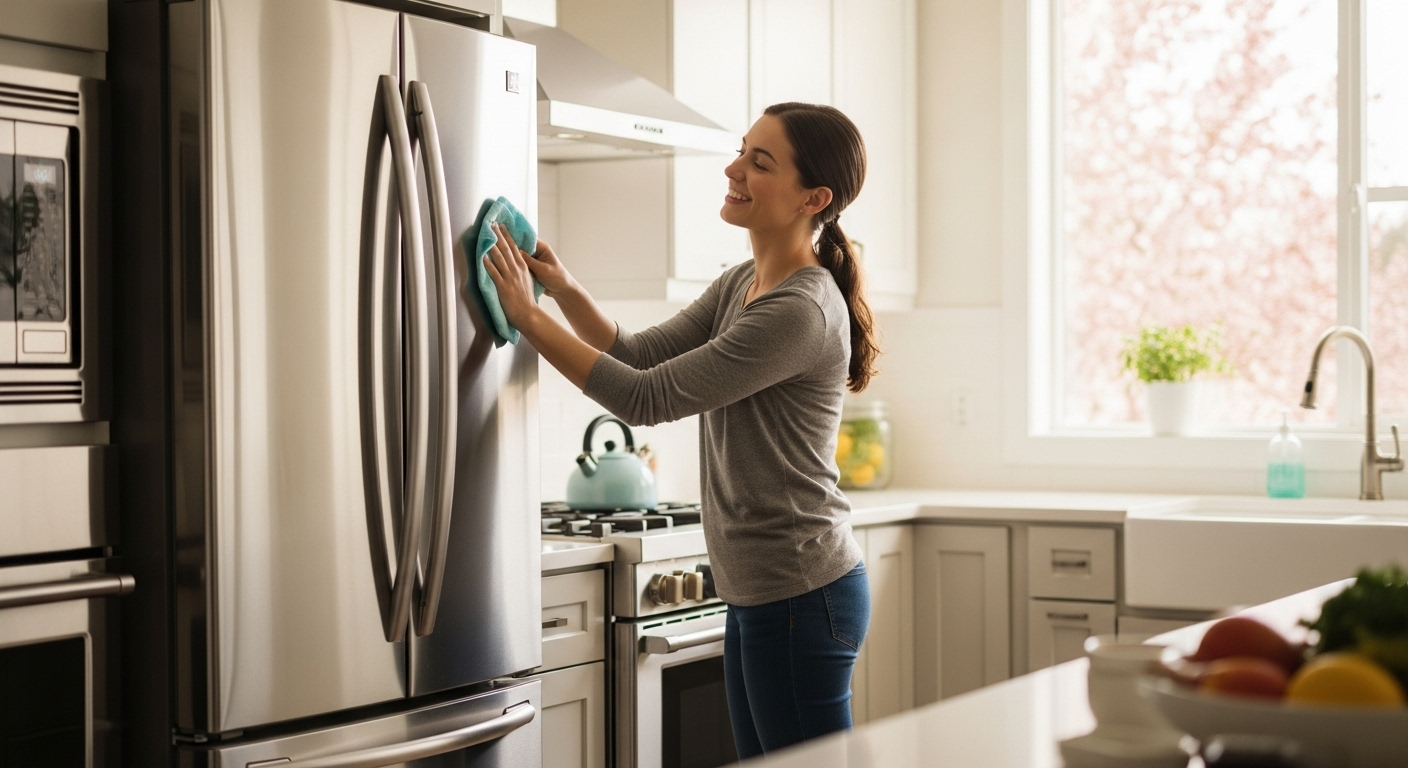
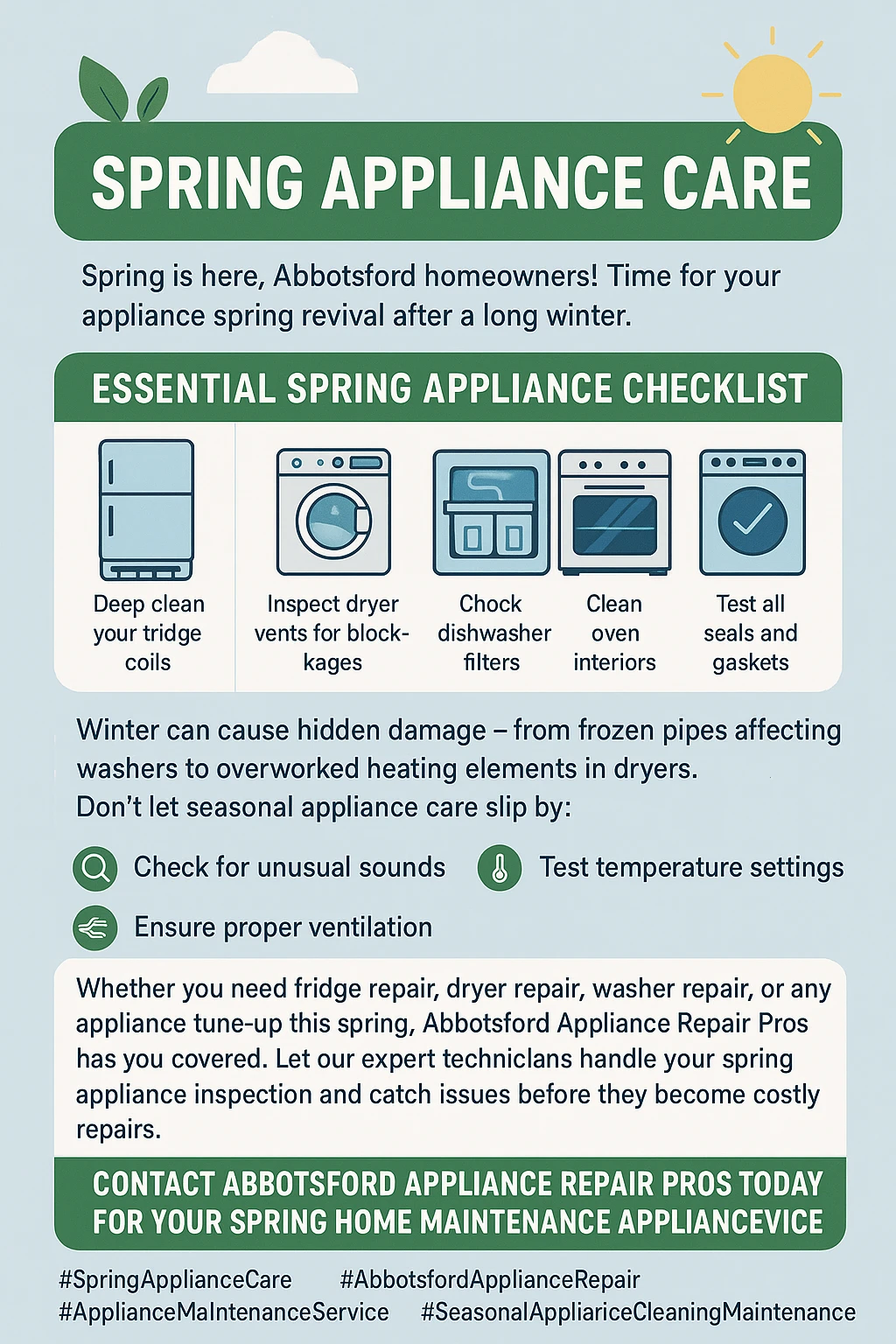
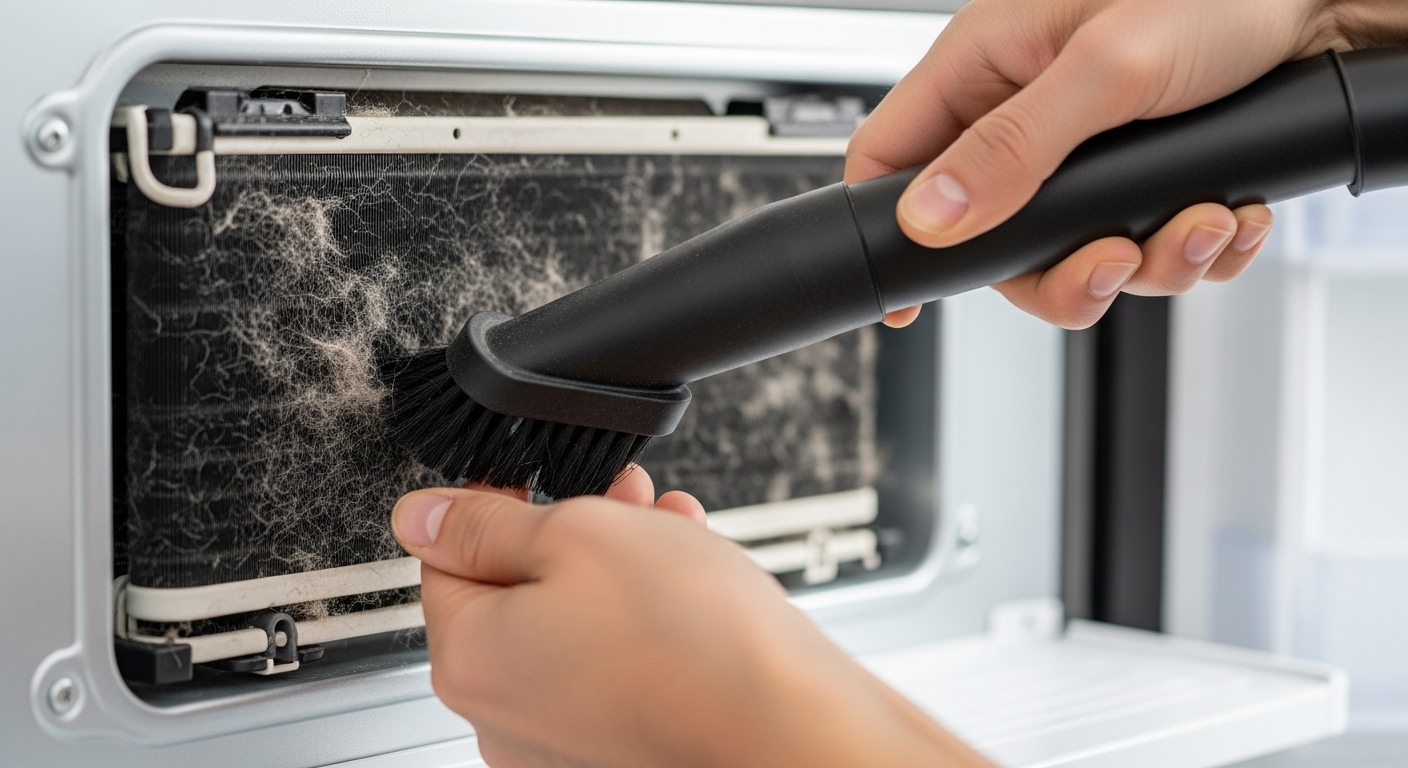


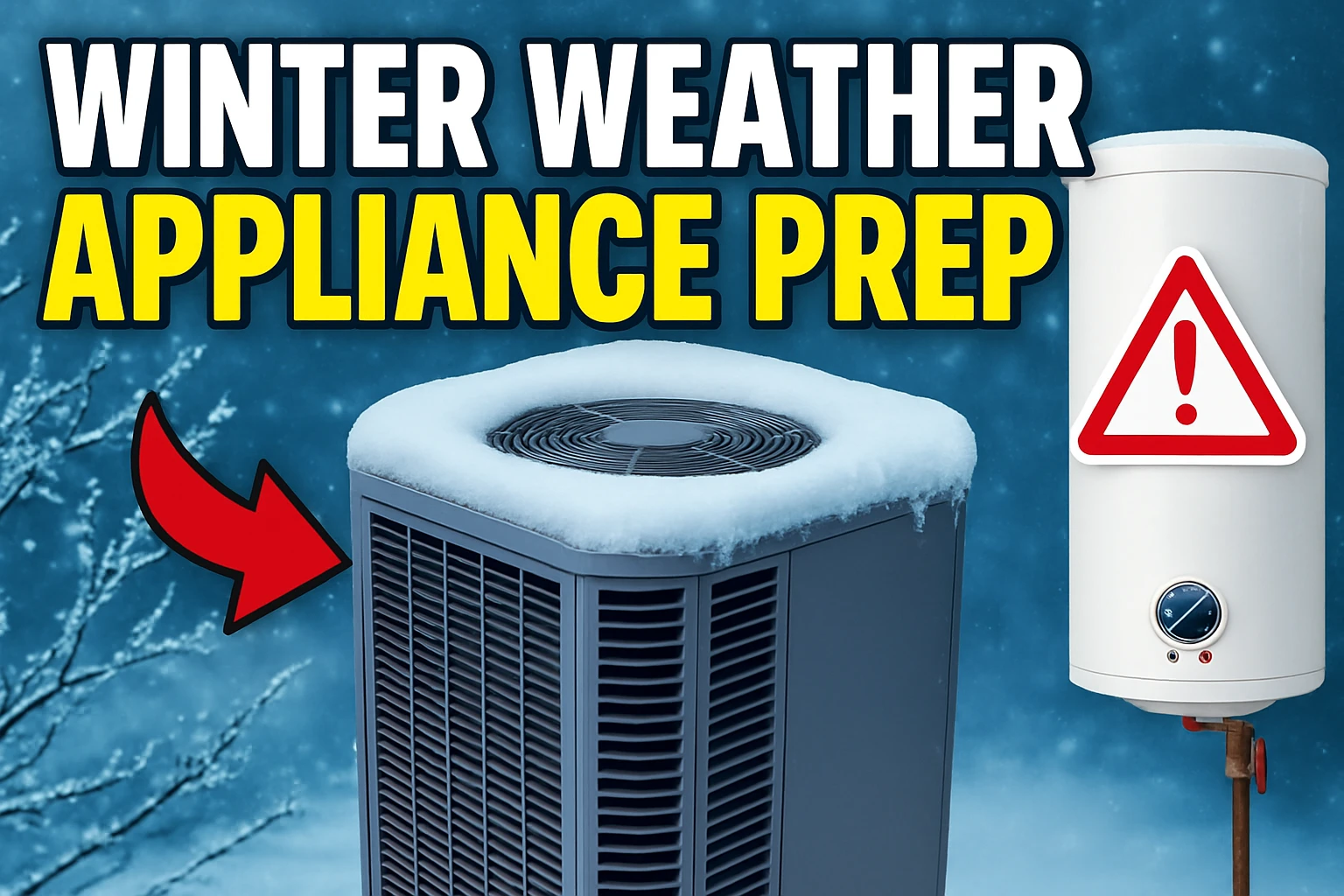





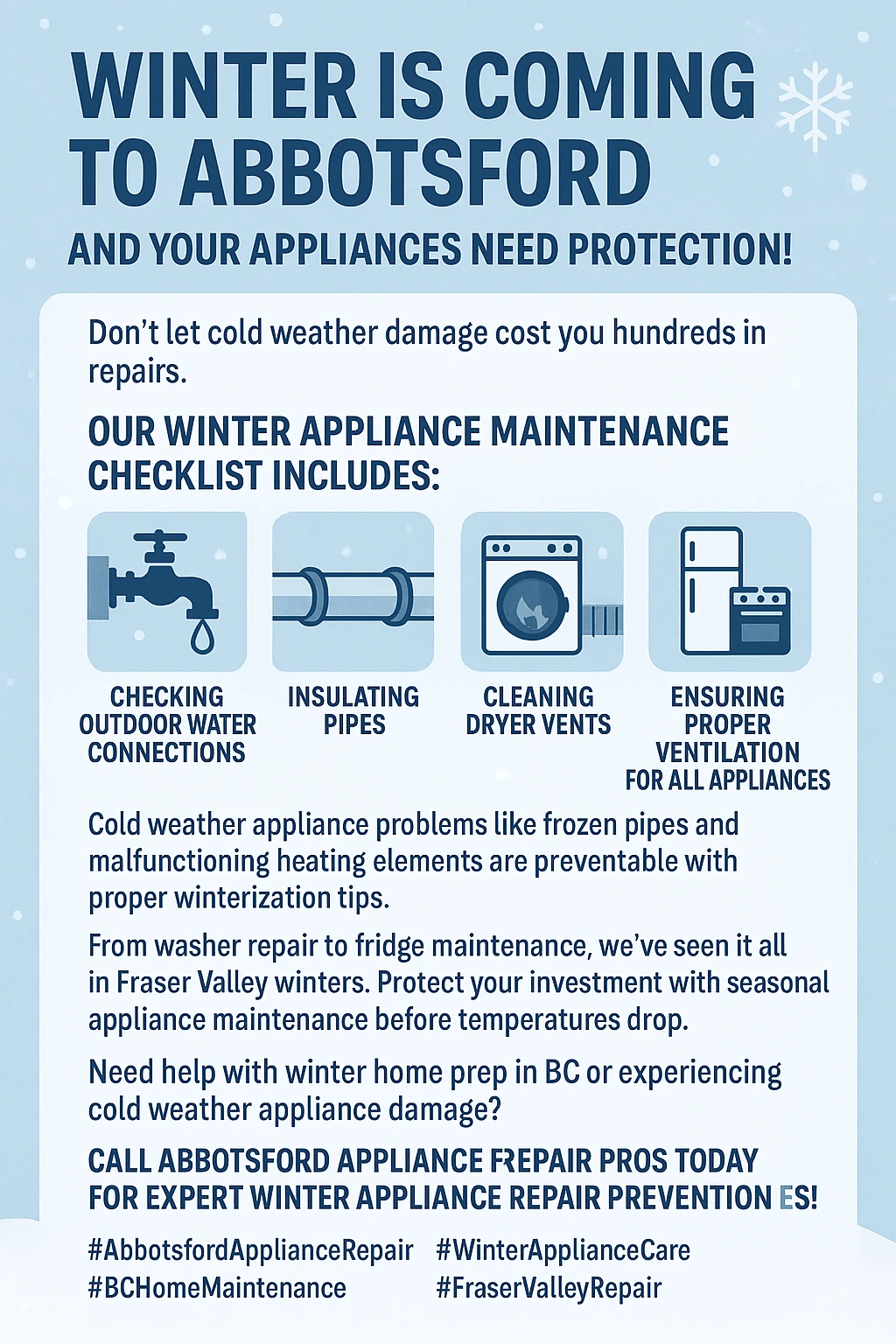
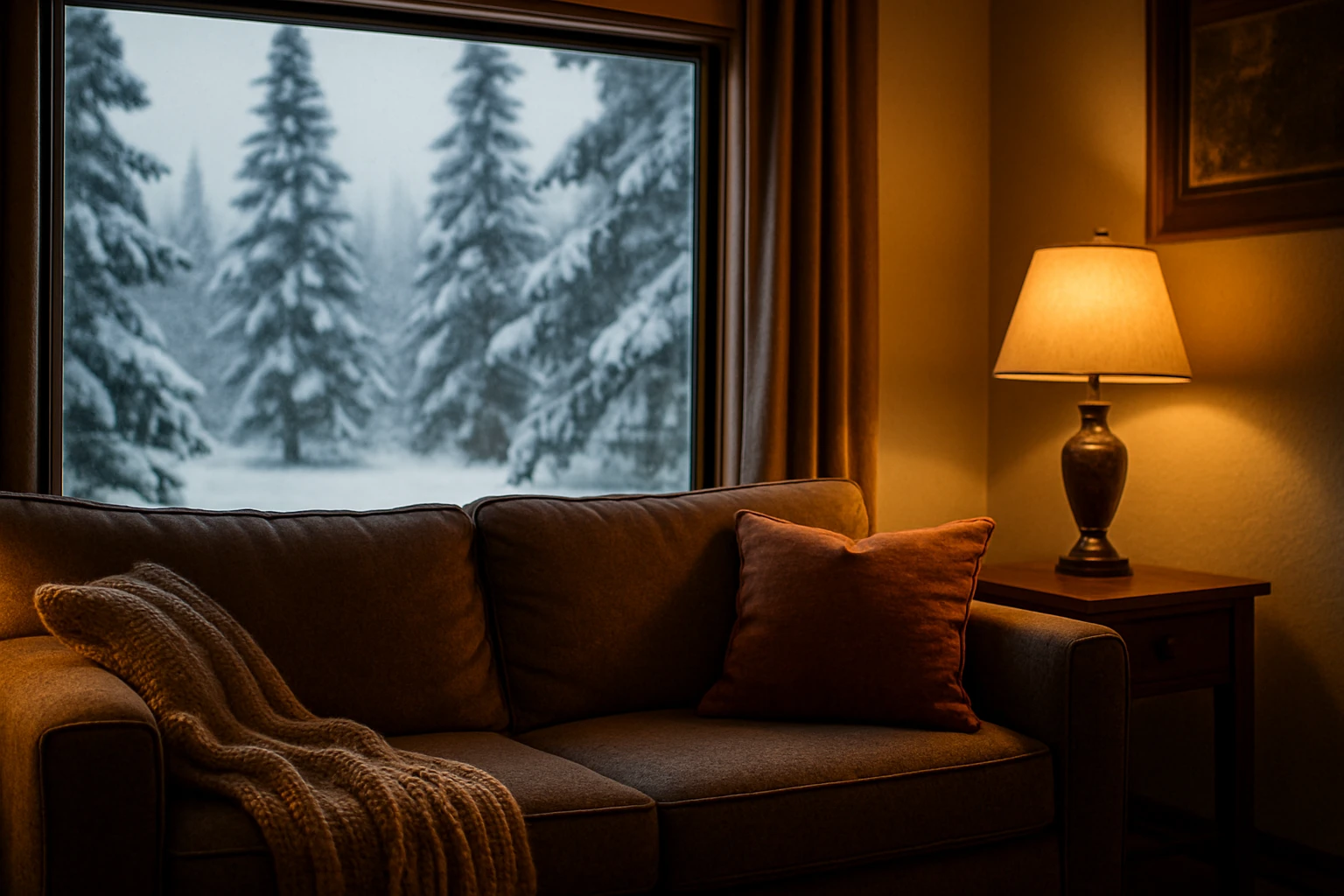
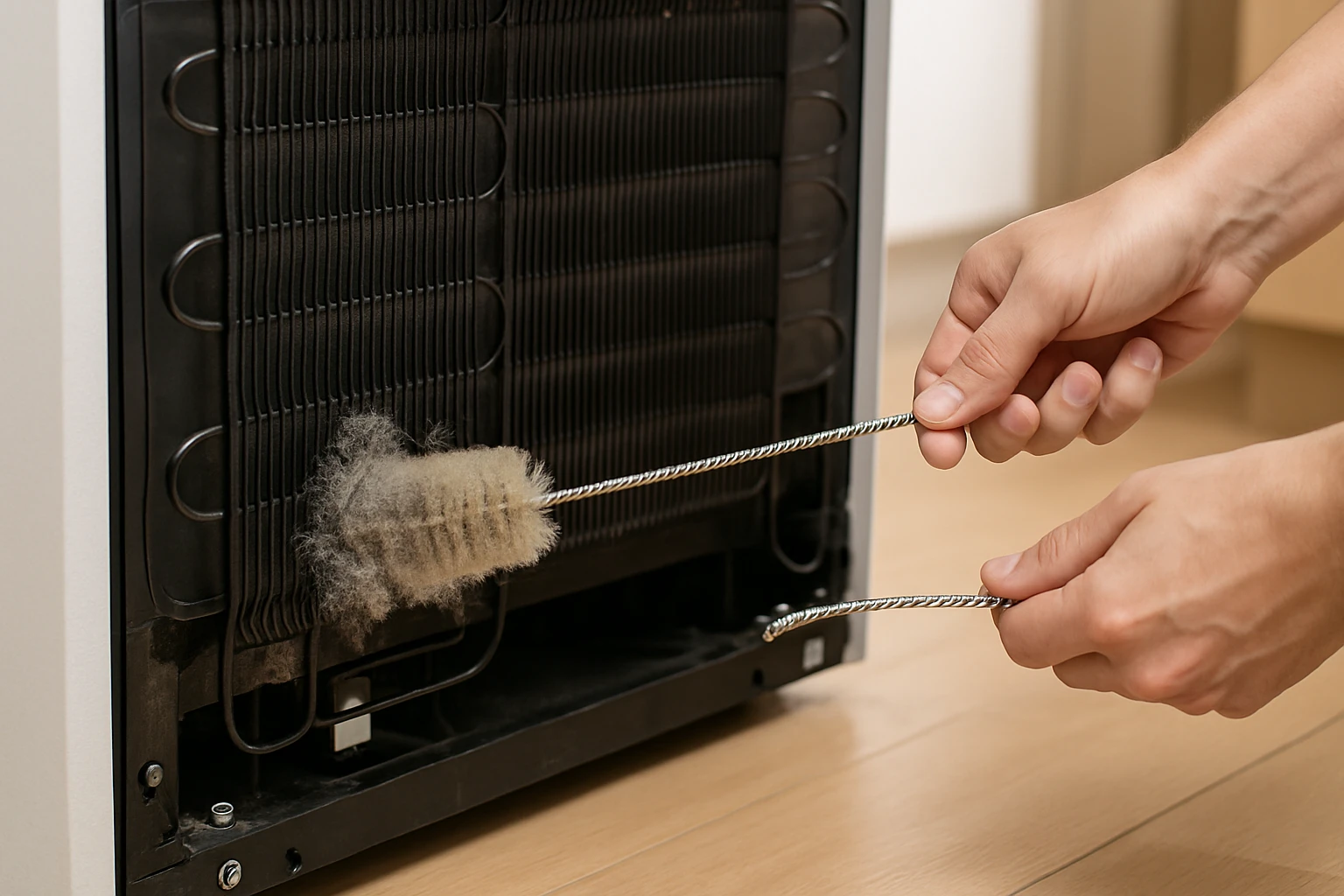 Winter also brings unique challenges with ice makers and water dispensers. If your home experiences freezing temperatures or power outages, these components are particularly vulnerable. Consider shutting off the water supply to these features if you’re going away for extended periods, and always keep the manufacturer’s manual handy for proper restart procedures after power outages. The peace of mind is worth the minor inconvenience, especially when you consider that ice and water dispenser repairs can cost over $500.
Winter also brings unique challenges with ice makers and water dispensers. If your home experiences freezing temperatures or power outages, these components are particularly vulnerable. Consider shutting off the water supply to these features if you’re going away for extended periods, and always keep the manufacturer’s manual handy for proper restart procedures after power outages. The peace of mind is worth the minor inconvenience, especially when you consider that ice and water dispenser repairs can cost over $500.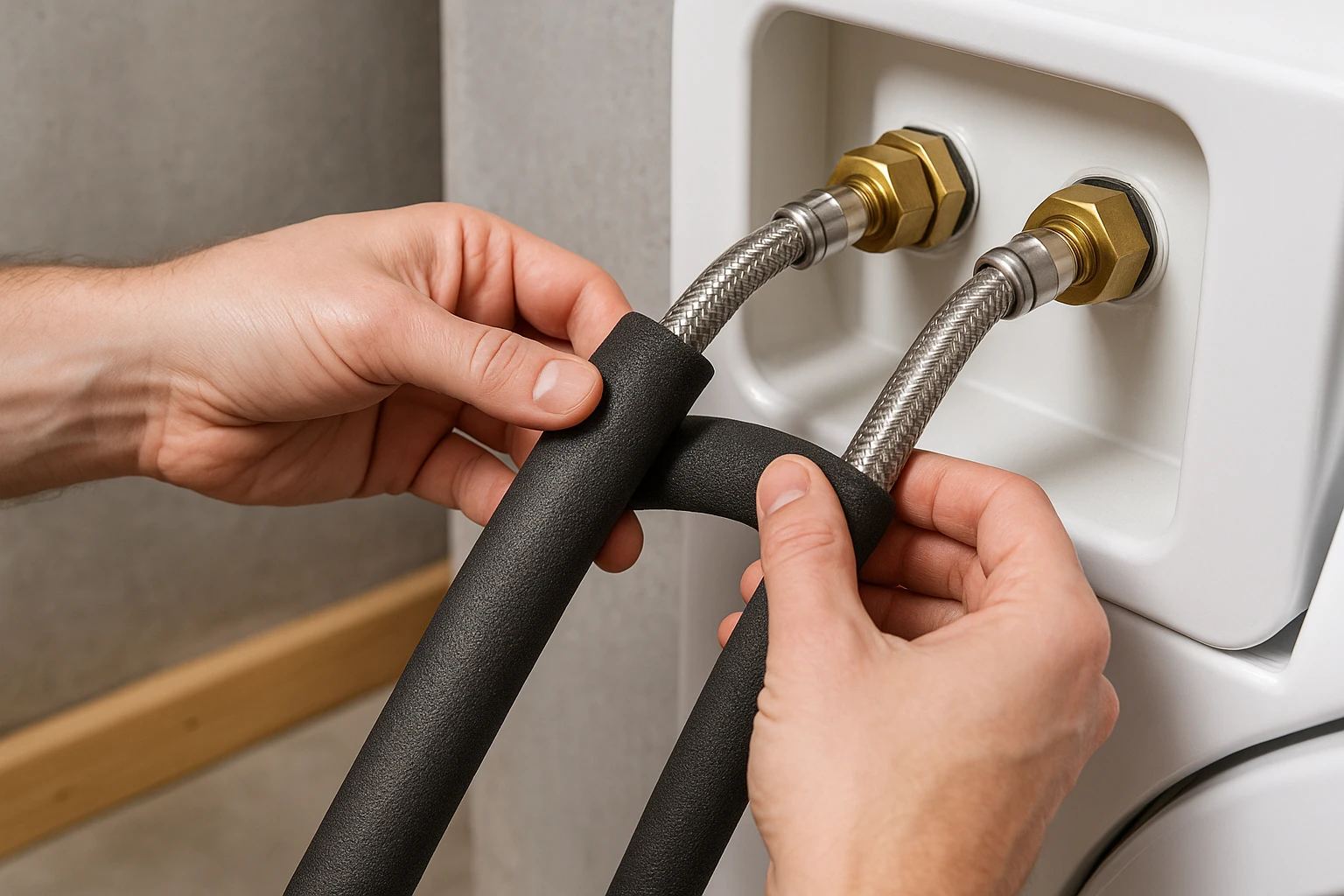 Hose inspection and replacement should be on your winter prep checklist even if everything seems to be working fine. Cold weather makes rubber hoses brittle, and the increased pressure from winter washing loads can cause weak spots to fail catastrophically. Replace fill and drain hoses every five years as a general rule, but inspect them more frequently during winter months. Look for cracks, bulges, or signs of wear near the connections – these are your early warning signs that disaster is lurking.Your washing machine’s internal components need special attention during winter months when they’re working harder than usual. Run an empty hot water cycle with white vinegar or a commercial washer cleaner monthly during winter. This removes soap residue, mineral deposits, and bacteria that accumulate faster when you’re washing heavier, dirtier winter clothes. The cleaning cycle also helps maintain the rubber seals and gaskets that can become brittle in cold weather.Dryer maintenance becomes even more critical during winter when these units are running constantly and venting into cold outside air. Clean the lint trap after every single load – no exceptions. During winter months, also check the exterior vent monthly to ensure it’s not blocked by snow, ice, or accumulated lint. A blocked vent doesn’t just reduce efficiency; it creates a serious fire hazard. The temperature differential between the hot dryer exhaust and cold outside air can cause moisture condensation that leads to lint clumping and blockages.The dryer’s internal ductwork deserves professional cleaning before winter begins, especially if you’ve noticed longer drying times or excessive heat buildup. Winter’s heavier fabrics and increased usage put extra strain on the entire ventilation system. Consider having the entire vent system professionally cleaned and inspected – it’s an investment that pays for itself in improved efficiency and reduced fire risk. Professional services can also identify and repair issues like damaged ductwork or inadequate ventilation that become serious problems during heavy winter usage.
Hose inspection and replacement should be on your winter prep checklist even if everything seems to be working fine. Cold weather makes rubber hoses brittle, and the increased pressure from winter washing loads can cause weak spots to fail catastrophically. Replace fill and drain hoses every five years as a general rule, but inspect them more frequently during winter months. Look for cracks, bulges, or signs of wear near the connections – these are your early warning signs that disaster is lurking.Your washing machine’s internal components need special attention during winter months when they’re working harder than usual. Run an empty hot water cycle with white vinegar or a commercial washer cleaner monthly during winter. This removes soap residue, mineral deposits, and bacteria that accumulate faster when you’re washing heavier, dirtier winter clothes. The cleaning cycle also helps maintain the rubber seals and gaskets that can become brittle in cold weather.Dryer maintenance becomes even more critical during winter when these units are running constantly and venting into cold outside air. Clean the lint trap after every single load – no exceptions. During winter months, also check the exterior vent monthly to ensure it’s not blocked by snow, ice, or accumulated lint. A blocked vent doesn’t just reduce efficiency; it creates a serious fire hazard. The temperature differential between the hot dryer exhaust and cold outside air can cause moisture condensation that leads to lint clumping and blockages.The dryer’s internal ductwork deserves professional cleaning before winter begins, especially if you’ve noticed longer drying times or excessive heat buildup. Winter’s heavier fabrics and increased usage put extra strain on the entire ventilation system. Consider having the entire vent system professionally cleaned and inspected – it’s an investment that pays for itself in improved efficiency and reduced fire risk. Professional services can also identify and repair issues like damaged ductwork or inadequate ventilation that become serious problems during heavy winter usage.